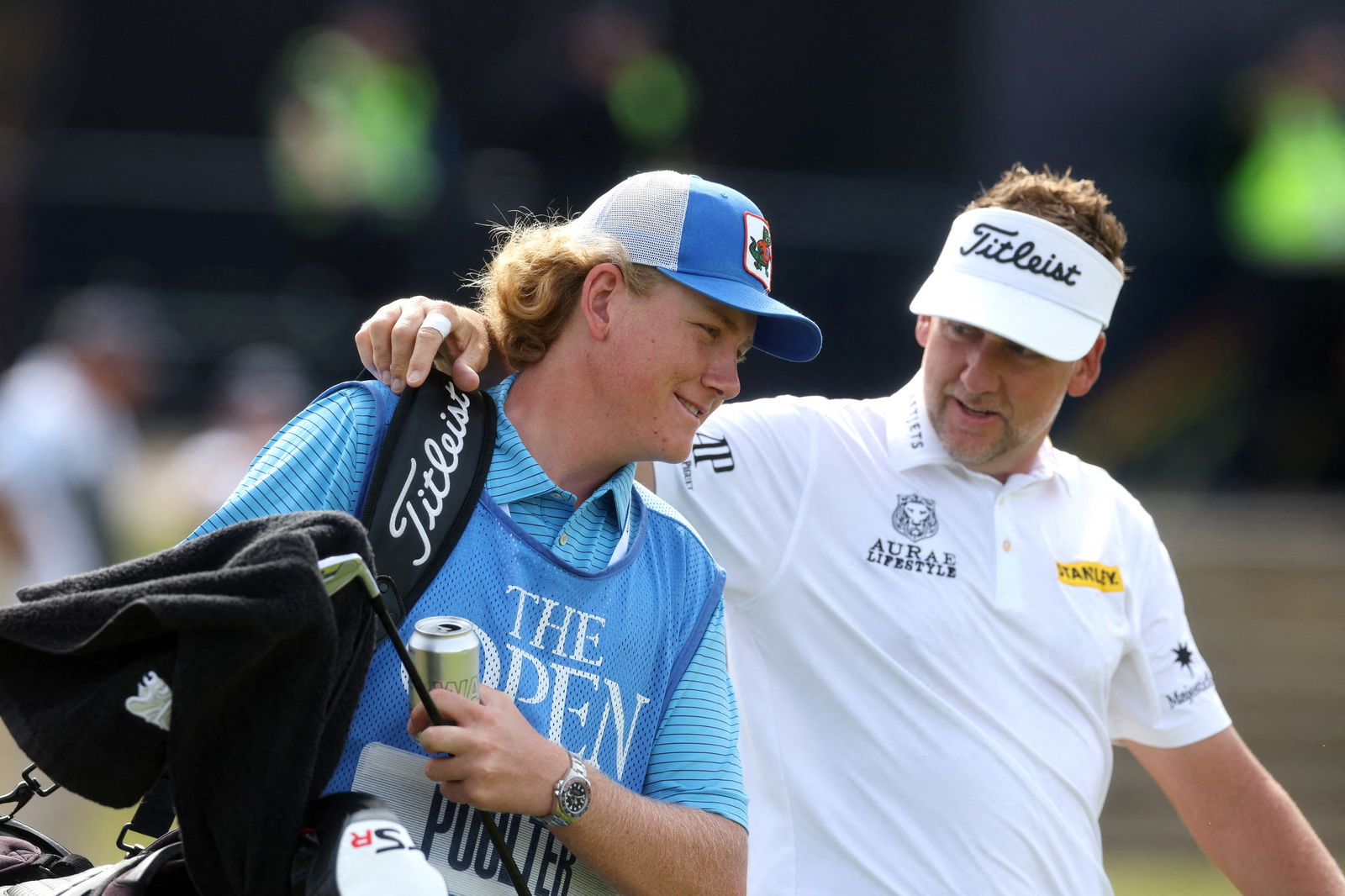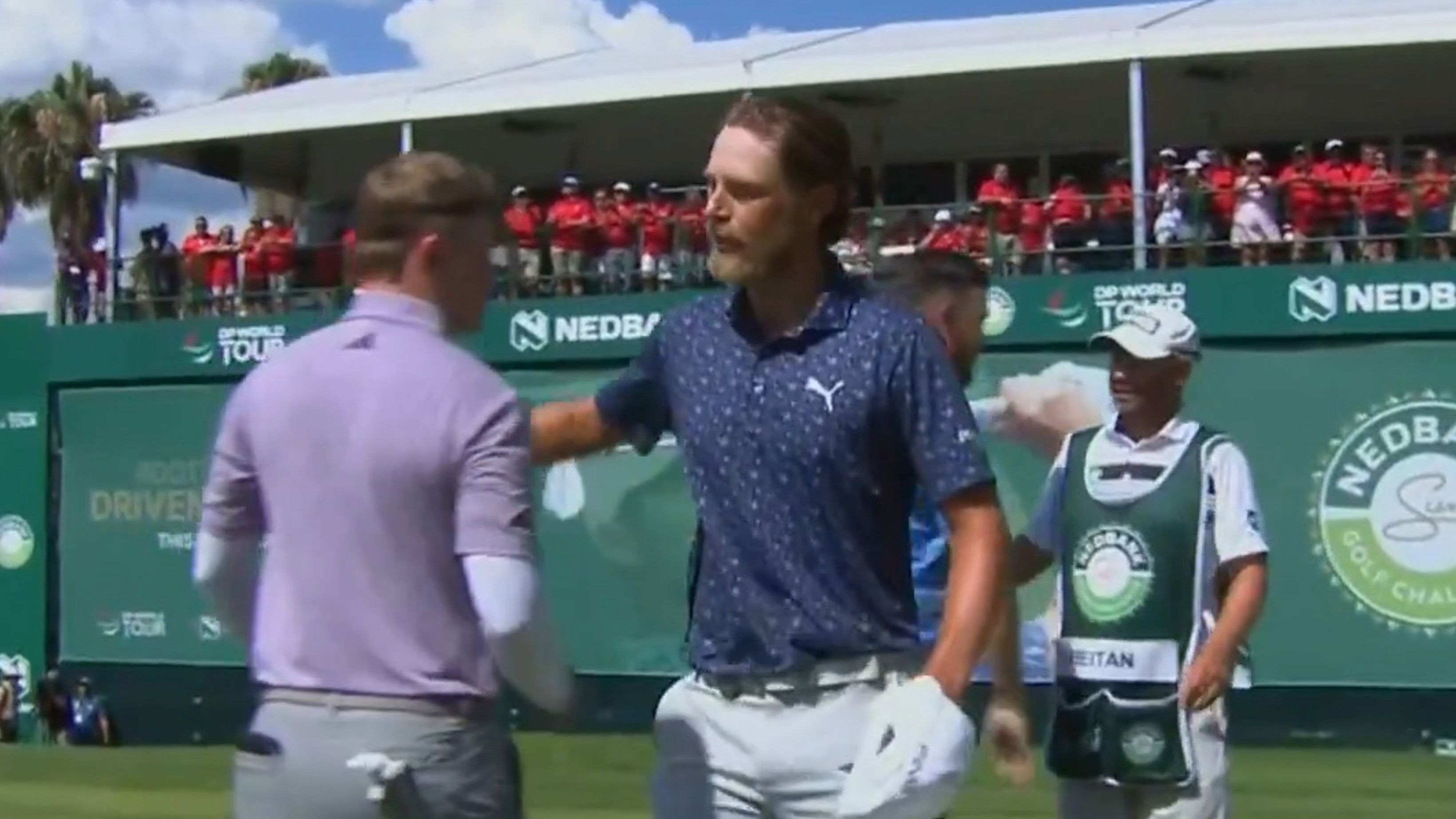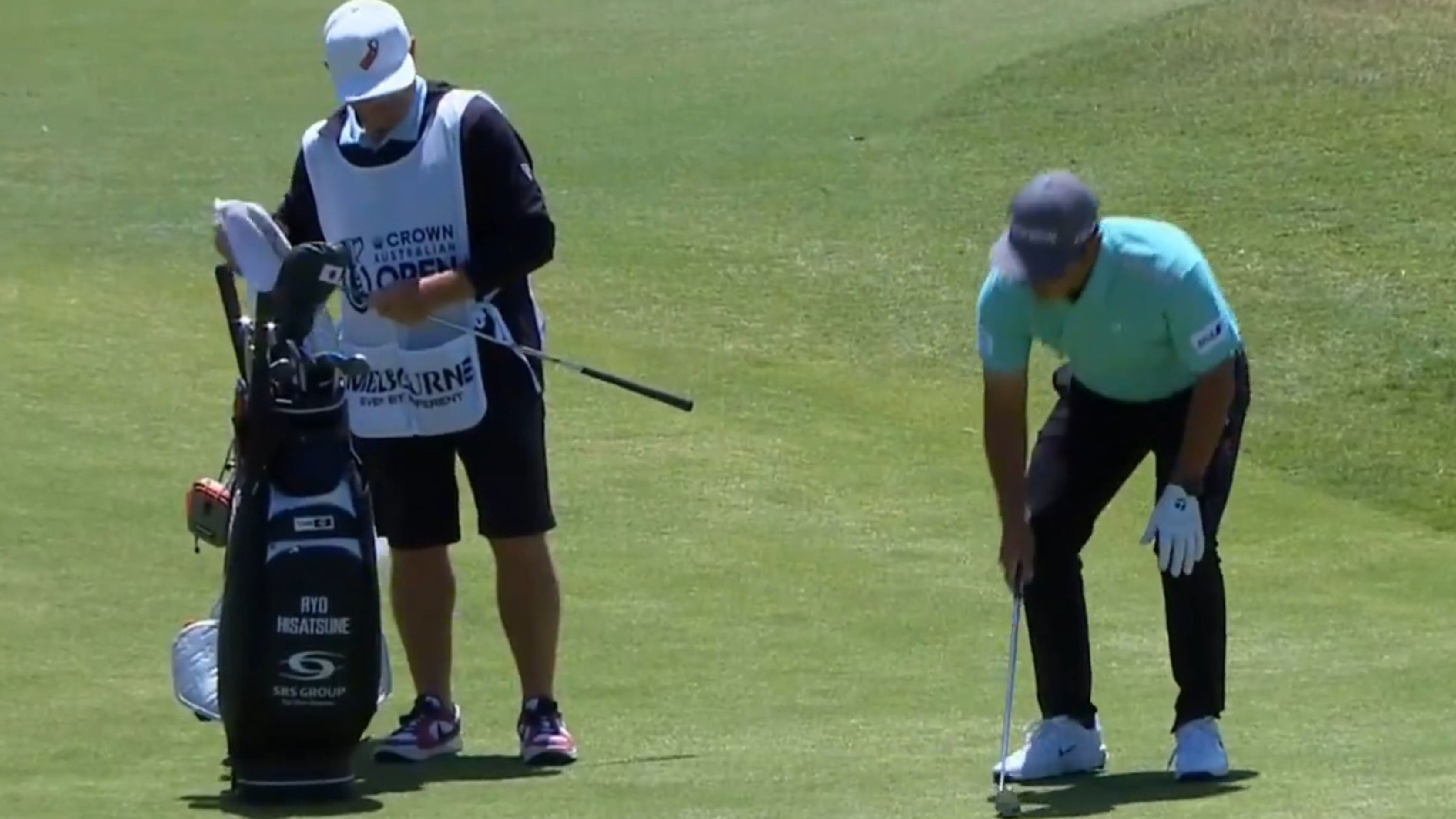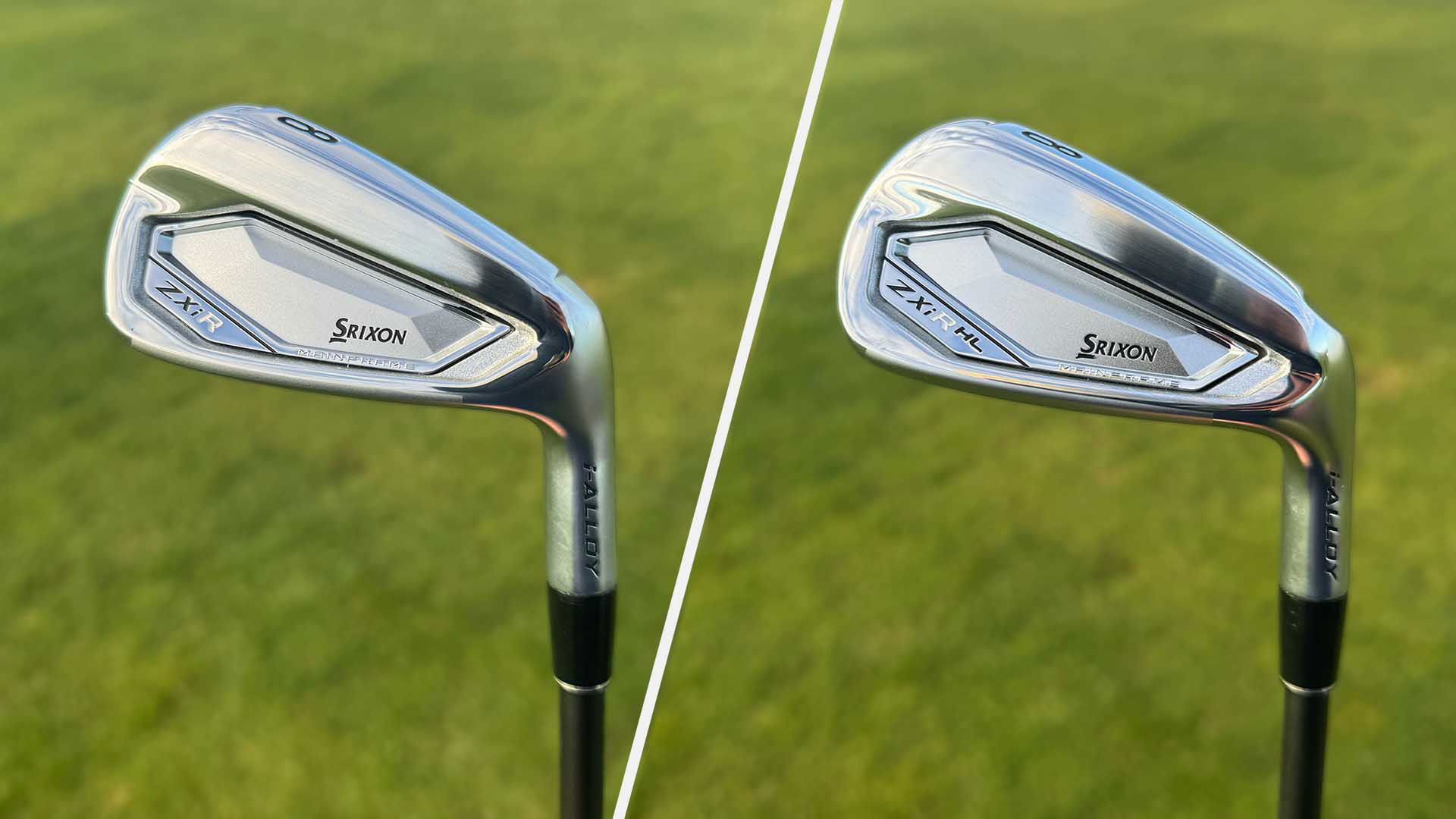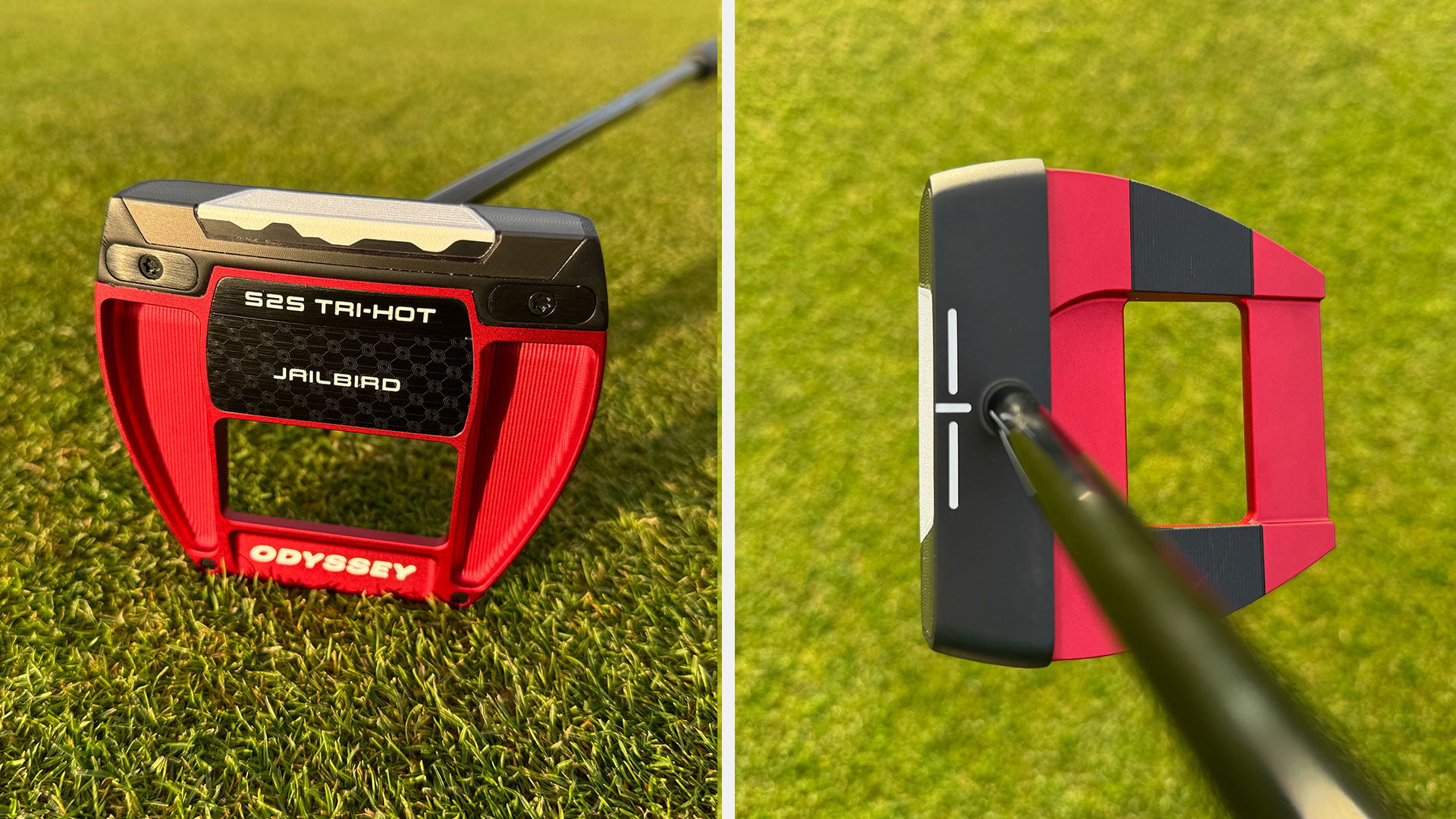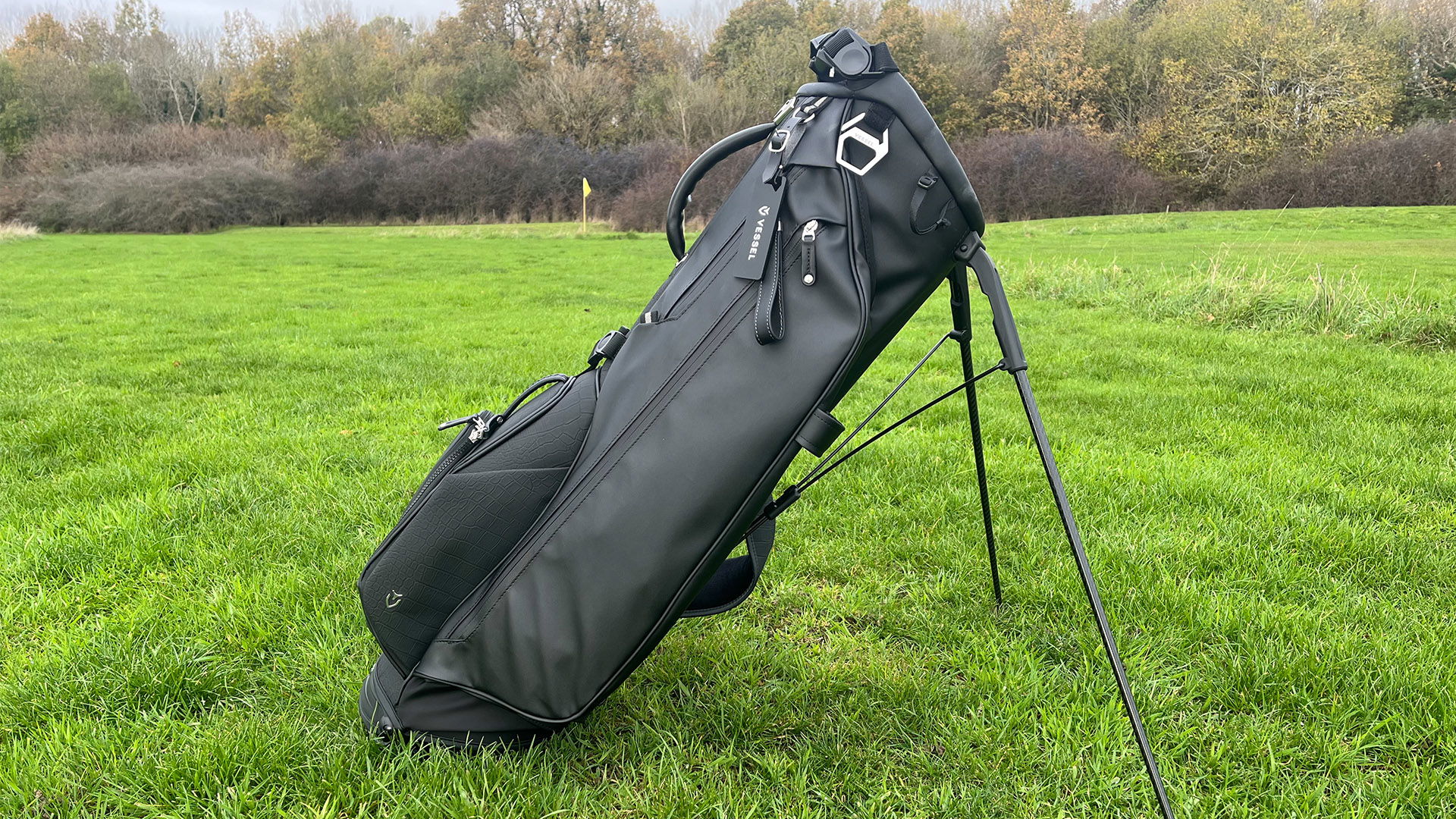Golf fans stunned after learning stroke and distance rule for first time during PGA Championship
"Can you imagine how insane l'd sound telling the boys this is a real rule?!" golfers are only just coming to terms with this stroke and distance relief tip you can use on the green. Did you know about this rule on the golf course?

We've all been there, or at least I have. That dreaded moment when you're playing a golf course with lightning fast greens and you get a little too excited by sending one straight off the dancefloor and into the bunker.
As you see your dimples disappear over the front edge of the green and into a sandy grave, you make that horrible walk back to your golf stand bag to replace your putter with a wedge.
Probably to a few a jeers from your pals, too.
But instead of heading down into the bunker, there is a rule that you can use in your favour.
Particularly if you class yourself, like me, as a very average bunker player.
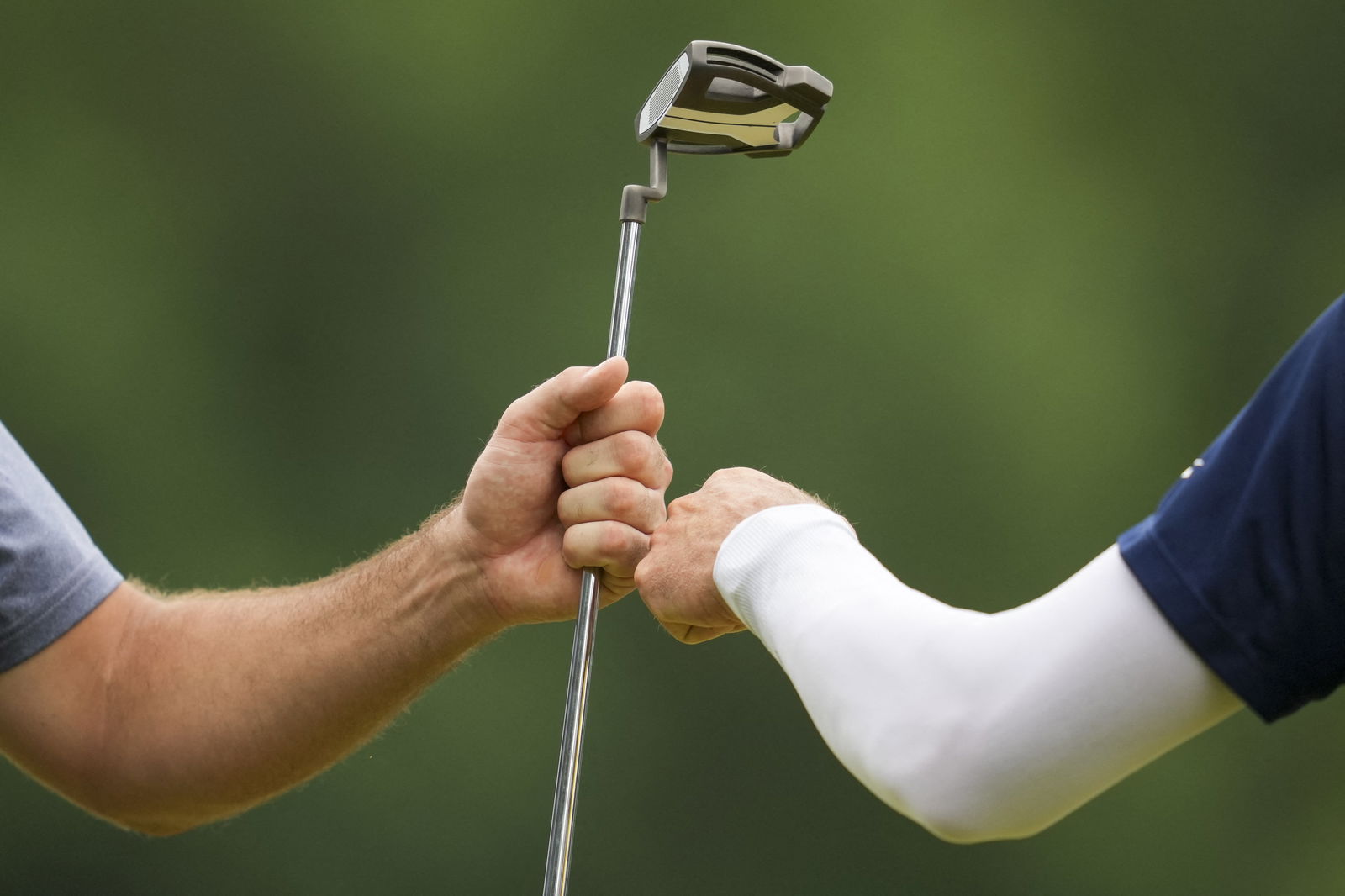
Many of you golfers out there will no doubt have heard of stroke and distance relief.
It's Rule 18 in the golf rule handbook.
However, you probably have never previously considered taking this rule during such an instance like this on the green.
Well under the rules of golf, you can...
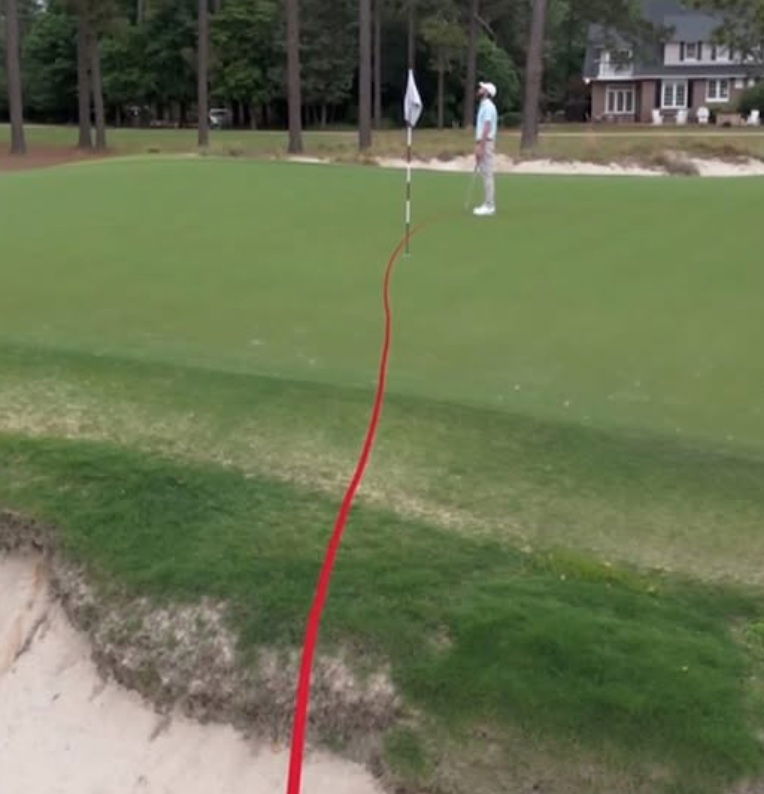
In golf, 'stroke and distance' relief is only typically taken by golfers when a ball is lost, sent out of bounds or found in a penalty area.
Under stroke and distance relief, a golfer plays their ball from where their previous stroke was made. Of course the only downside is adding a one-stroke penalty to their score.
In a post published by the USGA and shared by Kyle Tims on social media during the PGA Championship this week, which you can watch below, ardent golfers have been losing their minds after discovering stroke and distance relief CAN, under the official rules of golf, be used after a having shocker on the green.
Of course, if you did putt your ball into the bunker, then you could get down in there and splash it out either into the hole or closer than where your initial putt was taken from.
But if you spend more time in the sand than the Hoff, it probably makes more sense to just suck up the one-stroke penalty and carry on from where you initially were on the green.
"Can you imagine how insane I would sound telling the boys this is a real rule?!" wrote one shocked golfer.
Another wrote: "My downhill putt misses horribly long…. 'Okay, so boys get this...'"
"This cannot be real surely?!" commented one disbelieving player.
"I am about to get real REAL annoying on the golf course," joked one golfer.
Watch this example explained in the video:
I am about to get real REAL annoying on the golf course. ✊🏼@USGA pic.twitter.com/mvLNhWT3u0
— Kyle Tims (@KyleTims) May 8, 2025
Here's the full explanation of Rule 18: Stroke and Distance Relief via the R&A's website:
Relief under Penalty of Stroke and Distance Allowed at Any Time
At any time, a player may take stroke-and-distance relief by adding one penalty stroke and playing the original ball or another ball from where the previous stroke was made (see Rule 14.6).The player always has this stroke-and-distance relief option:
- No matter where the player’s ball is on the course, and
- Even when a Rule requires the player to take relief in a certain way or to play a ball from a certain place.
Once the player puts another ball in play under penalty of stroke and distance (see Rule 14.4):
- The original ball is no longer in play and must not be played.
- This is true even if the original ball is then found on the course before the end of the three-minute search time (see Rule 6.3b).
But this does not apply to a ball to be played from where the previous stroke was made when the player:
- Announces that they are playing a provisional ball (see Rule 18.3b),
- Is playing a second ball in stroke play under Rule 14.7b or 20.1c(3).
Ball Lost or Out of Bounds: Stroke-and-Distance Relief Must Be Taken
When Ball Is Lost or Out of Bounds
(1) When Ball Is Lost. A ball is lost if not found in three minutes after the player or their caddie begins to search for it.If a ball is found in that time but it is uncertain whether it is the player’s ball:
- The player must promptly attempt to identify the ball (see Rule 7.2) and is allowed a reasonable time to do so, even if that happens after the three-minute search time has ended.
- This includes a reasonable time to get to the ball if the player is not where the ball is found.
If the player does not identify their ball in that reasonable time, the ball is lost.(2) When Ball Is Out of Bounds. A ball at rest is out of bounds only when all of it is outside the boundary edge of the course.A ball is in bounds when any part of the ball:
- Lies on or touches the ground or anything else (such as any natural or artificial object) inside the boundary edge, or
- Is above the boundary edge or any other part of the course.
A player may stand out of bounds to play a ball on the course.
Learn more about stroke and distance here

